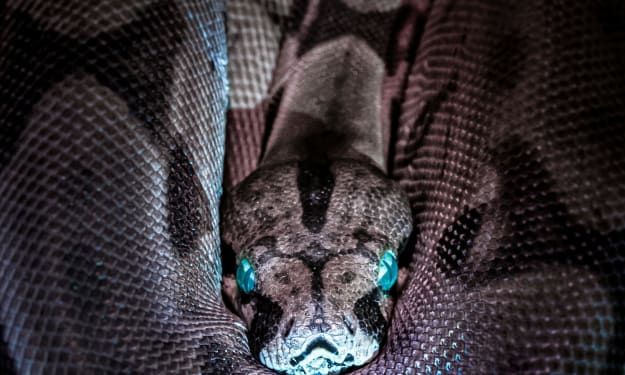Spider Geckos Survive
The surface temperatures of the Lut Desert in Iran skyrocket to over 150 degrees Fahrenheit more often than anywhere else on earth. Considered mostly barren, this desert’s harsh environment makes it a difficult home for any life to thrive.

A handful of small, nocturnal geckos have spilled their guts for science, revealing how the creatures get by in a part of Earth’s hottest landscape.
Surface temperatures in the Lut Desert in Iran, home to the Misonne’s spider gecko (Rhinogecko misonnei), soar past 65° Celsius more frequently than anywhere else on the planet. The extreme heat makes it difficult for life to thrive, and for years, ecologists have regarded the desert as mostly barren.
To find out how the geckos sustain themselves in this desolate oven, entomologist Hossein Rajaei of the State Museum of Natural History in Stuttgart, Germany and colleagues analyzed the stomach contents of six geckos using DNA metabarcoding (SN: 4/18/16). The technique compares chunks of DNA with a species identification database, like a bar code scanner in a grocery store. “It’s very accurate, very comprehensive and very trustable,” Rajaei says.
Within the geckos’ digestive soup stewed DNA from 94 species, about 81 percent of which hail from outside the Lut Desert, the team reports November 18 in the Journal of Zoological Systematics and Evolutionary Research.
The majority of these outsiders were winged insects such as flies, moths and wasps that migrate through the desert from bordering temperate landscapes. The remaining species — arachnids, arthropods and more moths — are endemic to the Lut, but are elusive in its heart, where the geckos were collected. The unexpected diversity highlights that there’s more living in this desert than meets the eye, Rajaei says.
The findings underscore the importance of intertwined food webs for animals to survive in hostile habitats, says Robert Pringle, an ecologist at Princeton University who was not involved in the research. “The movement of insects from outside the immediate area subsidizes the geckos and helps them to persist in this extreme desert environment,” he says.The surface temperatures of the Lut Desert in Iran skyrocket to over 150 degrees Fahrenheit more often than anywhere else on earth. Considered mostly barren, this desert’s harsh environment makes it a difficult home for any life to thrive.
Enter the spider gecko. These small nocturnal lizards can withstand harsh summer temperatures and extreme winter night lows. These tiny reptiles have long slender legs and a tail to help them climb in their rocky habitats.To find out how Persian spider geckos, or Rhinogecko misonnei, are able to survive on earth’s hottest landscape, scientists at the State Museum of Natural History in Germany analyzed the stomach contents of six geckos.
Using DNA metabarcoding, the scientists studied the food in the gecko’s digestive system. They found DNA from 94 species. 81% of the species were from outside the Lut Desert– mostly moths, wasps, and flies that pass through the desert from more temperate regions.“The movement of insects from outside the immediate area subsidizes the geckos and helps them to persist in this extreme desert environment,” says Hossein Raijei who helmed the study.
The other 19% were comprised of anthropods, arachnids, and moths native to the desert. Underscoring the importance of intertwined food webs for animals surviving in hostile habitats. Raijei says the unexpected diversity highlights that there’s more living in this desert than meets the eye.A handful of small, nocturnal geckos have spilled their guts for science, revealing how the creatures get by in a part of Earth’s hottest landscape.
Surface temperatures in the Lut Desert in Iran, home to the Misonne’s spider gecko (Rhinogecko misonnei), soar past 65° Celsius more frequently than anywhere else on the planet. The extreme heat makes it difficult for life to thrive, and for years, ecologists have regarded the desert as mostly barren.





Comments
There are no comments for this story
Be the first to respond and start the conversation.